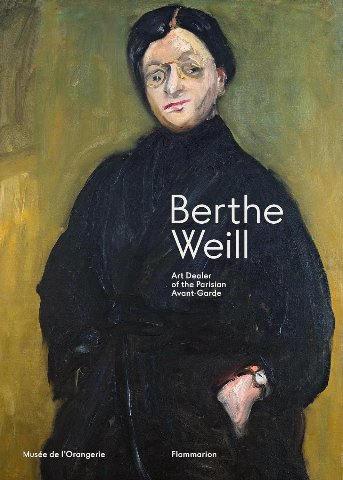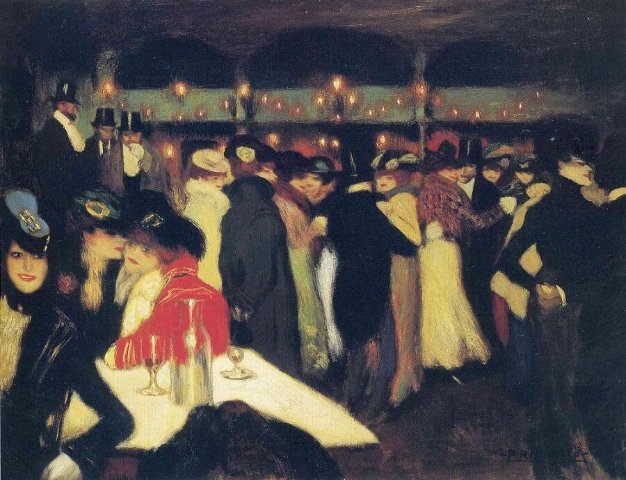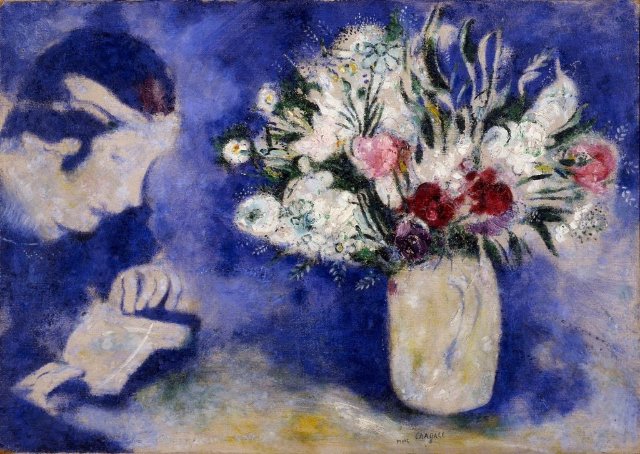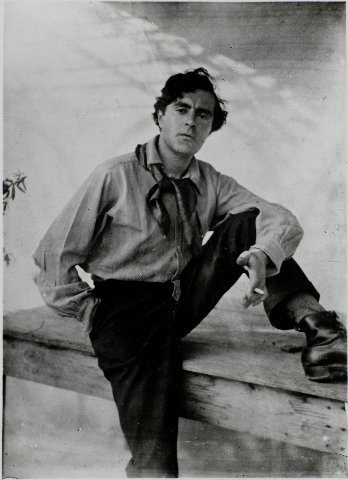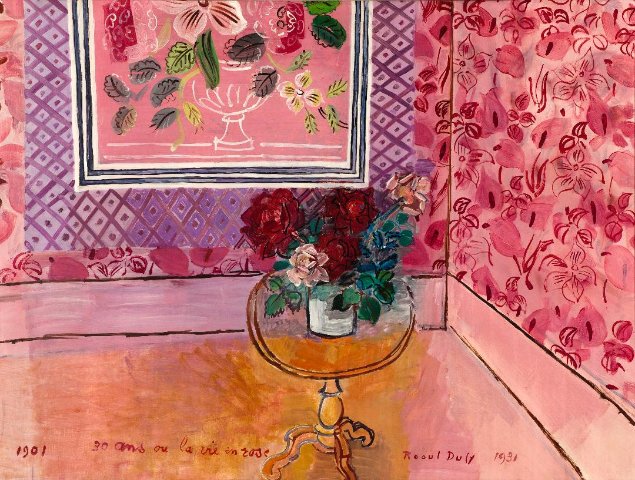Berthe Weill: Art Dealer of the Parisian Avant-Garde
NYU's Grey Art Museum
By: Jessica Robinson - Oct 06, 2024
Berthe Weill, a fiercely independent Jewish Parisian art dealer, was a woman ahead of her time. With a keen eye for the avant-garde, she helped launch the careers of some of the most iconic names in modern art. Picasso? She sold his first works. Modigliani? She organized his one and only solo exhibition during his lifetime. The show was shut down by police on the opening night, as they judged the nudes to be “indecent.” Consequently, no works were sold; the impoverished artist died three years later.
But Berthe Weill wasn’t just about the big names. She was one of the few dealers to champion women artists at a time when the art world barely gave them the time of day. She exhibited the works of Suzanne Valadon, one of the first female painters to break through in a male-dominated scene, and Émilie Charmy, known for her bold and expressive style. Weill didn’t just hang their art on her walls; she fought for their place in art history.
In her candid memoir, Pow! Right in the Eye!—recently translated into English—Weill described herself as having a "difficult personality." She wasn’t wrong. Her sharp tongue and uncompromising attitude were well known. Picasso biographer John Richardson even described her as a "peppery, homely Jewish spinster with spectacles thick as goldfish bowls." Yet it was her fiery personality and unrivaled intuition for spotting talent that made her a key figure.
Weill wasn’t just an art dealer who sole Picasso’s first works– she was a trailblazer, carving out space for the radical, the new and the unheard. How inexplicable that such a pivotal figure has flown under the radar for such a long time.
New York University’s Grey Museum is now giving Weill her due with Make Way for Berthe Weill: Art Dealer of the Parisian Avant-Garde on view through March 1, 2025. Featuring 110 paintings, drawings, prints and sculptures from Picasso, Matisse, Fernand Leger, and Raoul Dufy, the exhibition is a testament to Weill’s audacious vision.
Superbly organized by an international curatorial team which includes Lynn Gumpert, director of the Grey Art Museum, the show captures Weill’s pioneering spirit as the first dealer to promote exclusively emerging artists. “Weill sought out unproven artists, some of whom became household names and some of whom didn’t. But all benefited from her creativity, ingenuity, and passion,” says Gumpert.
Born into a Jewish family in Paris in 1865, Weill’s introduction to the art world was anything but conventional. She started out as an apprentice to a cousin in the antiques trade, but her sharp eye for talent, and passion for innovation. quickly set her apart. She didn’t just follow the trends, she set them.
In 1901, at the age of 36, she opened her own gallery under the ambiguous name Galerie B. Weill, a strategic decision meant to obscure her gender in a male-dominated industry. Her business card read “Place aux Jeunes,” which roughly translates to “make way for the young.”
Over four decades, from 1901 to 1941, Weill’s gallery was a beacon for emerging talent. Gertrude Stein praised her role in discovering and promoting avant-garde artists, writing in The Autobiography of Alive B. Toklas: “Practically everybody who later became famous had sold their first little picture to her.”
Despite the rising tide of anti-Semitism in France, fearless and determined, Weill boldly continued to champion the work of emerging artists.
Included in the show are works by Suzanne Valadon, E?milie Charmy, and Alice Halicka, to name a few among the many female artists Weill promoted. Also included are works by Marc Chagall, Andre? Derain, and Diego Rivera, whose first solo show took place at the Galerie B. Weill.
What really sets this show apart is its deep dive into Weill’s intricate relationships with various artists. In addition to paintings, the show includes archival treasures - personal letters, exhibition catalogues, and photographs -all highlighting her unique role.
Weill’s influence extended far beyond simply displaying art—she had an intuitive grasp of contemporary trends. She exhibited artists like Matisse and the Fauves long before their notorious debut at the 1905 Salon d'Automne. As detailed in her memoir Pow! Right in the Eye!, she even promoted Cubism when no one else dared, facing immense challenges in convincing the public of its significance.
In the post-WWI period, Weill showcased works by School of Paris artists, with a particular focus on figurative paintings. By the 1930s, she had moved toward abstract art, organizing exhibitions featuring Otto Freundlich and Alfred Reth. However, her career took a tragic turn in 1941 when the Nazi occupation of France led to the closure of her gallery under the oppressive “Aryanization” policies.
Weill managed to survive the war, though she emerged impoverished and in poor health. In a touching act of solidarity, fellow artists and gallery owners held a public auction in December 1946, donating artworks to support her as a testament to the pivotal role she played in their careers.
Even as the world around her changed—through wars, economic turmoil, and the rise of fascism—Weill remained fiercely dedicated to her artists. Her gallery survived for 40 years, a staggering achievement in itself, but her influence stretches far beyond its walls.
Despite her enormous contributions, Weill’s legacy has been overshadowed by the fame of the artists she helped make famous. As she bitterly observed in her memoir, “All of my ‘children’, or nearly all, have succeeded! But here’s the thing, I’m now the old mother that people are ashamed of, the one you don’t want to bring out in public.”
While it’s true that many artists she discovered moved on to more prestigious galleries once they had achieved success, leaving Weill behind, the fact remains that over 300 artists owe their start to her.
Weill’s story is a reminder that the real movers and shakers of art aren’t always the ones holding the paintbrush. Sometimes, they’re the ones with the courage to show the world something new before anyone else is ready to see it.
New York University’s Grey Museum offers a long-overdue tribute, restoring Berthe Weill to her rightful place in the history of modern art.
An illustrated publication, Berthe Weill: Art Dealer of the Parisian Avant-Garde, accompanies the exhibition. Published by Flammarion, it illuminates the rich artistic period by spotlighting recently rediscovered artists and offering new insights into the era’s central figures. The publication includes an introductory essay by Karen Le Morvan, founder of the Berthe Weill archives in Paris, a discussion of portraits of Weill by Anne Grace of the Montreal Museum of Fine Arts, an essay on antisemitism in late 19th-century France by historian Charles Dellheim, and more.
Also available in English for the first time is Weill’s 1933 memoir, edited by Gumpert and translated by William Rodarmor (University of Chicago Press).
The Grey Art Museum is open Tuesday, Thursday, and Friday, 11:00 am–6:00 pm, Wednesday, 11:00 am–8:00 pm, and Saturday, 11:00 am–5:00 pm.

